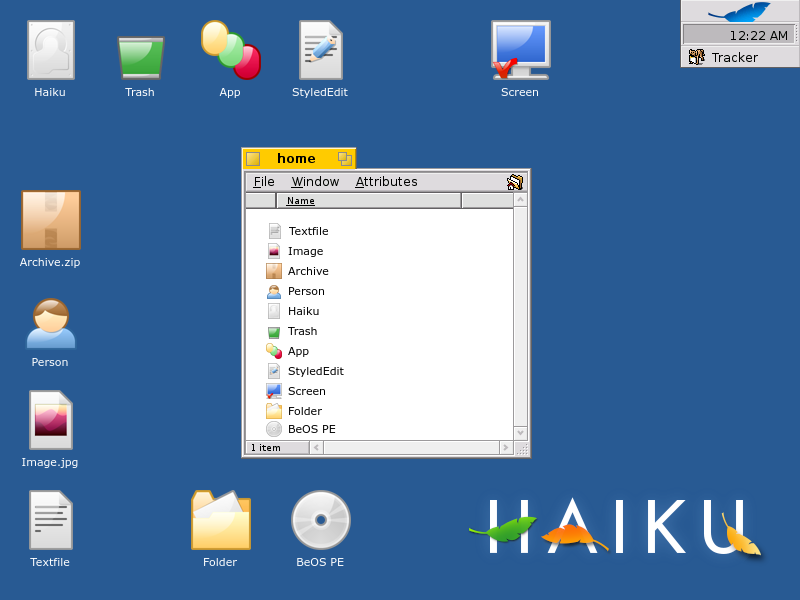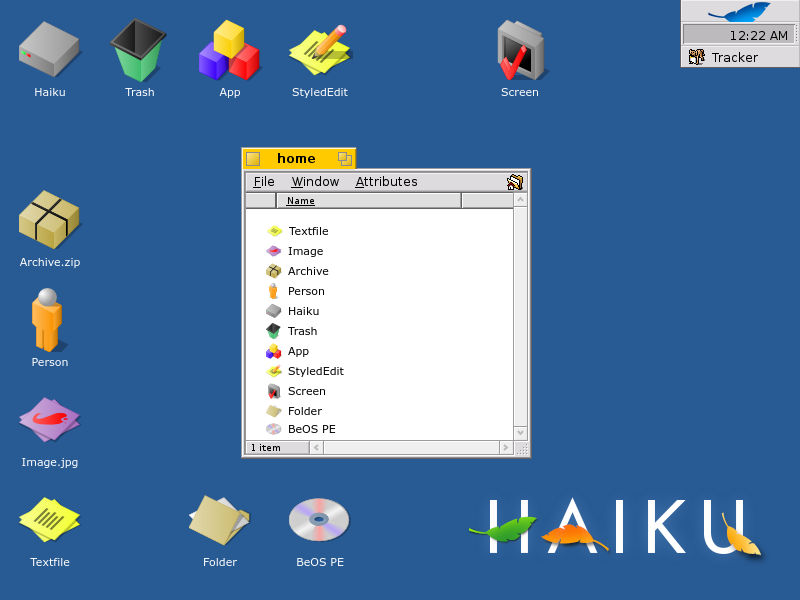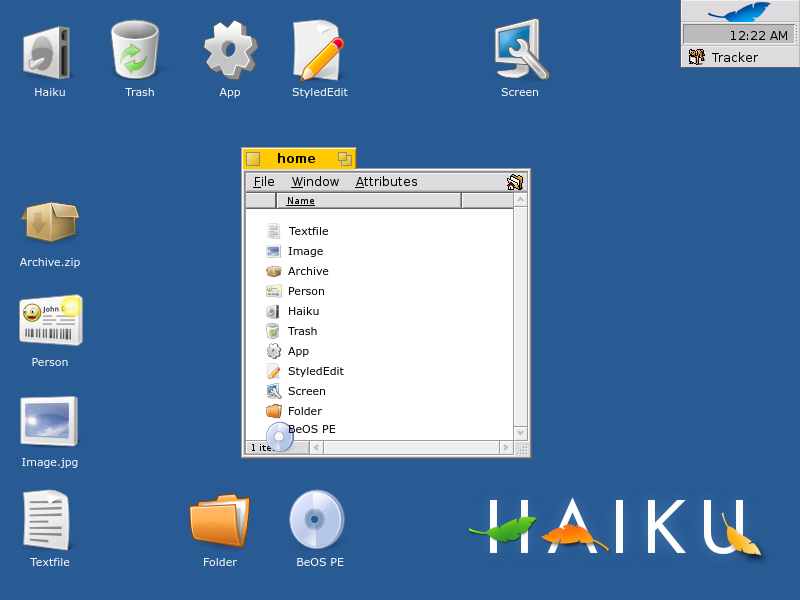In 2010-2011, mmlr created a new memory allocator: the guarded heap memory allocator. This allocator helps detect various bugs such as writing past the end of allocated memory, reading uninitialized memory, and freeing freed memory. These uses are detailed in “Using malloc_debug to Find Memory Related Bugs”. Later, in 2015, mmlr had a new project: updating the memory allocator to be able to report memory leaks.
To use this feature, start by loading libroot_debug.so instead of libroot.so. This can be done using the LD_PRELOAD environment variable. Once loaded, the MALLOC_DEBUG environment variable can be used to set various options. PulkoMandy added some notes to the end of “Using malloc_debug to Find Memory Related Bugs” describing what options are available. Relevant to finding memory leaks are enabling the guarded heap with g, dumping memory that is still allocated on exit (most of which should have been freed before the program exited and are memory leaks) with e, and telling it to show a stack trace with up to 50 items with s50. Putting it all together, the command to run a program with memory leak detection is LD_PRELOAD=libroot_debug.so MALLOC_DEBUG=ges50 program.
It is barely a week since the start of GSoC, but there has been so much progress on this port.
Ideally, this progress should be coupled with some documentation before my brain’s garbage
collector reclaims the reasoning, so that future maintainers can have an easier time rebasing
and porting newer versions of .NET.
Project status overview
Completed tasks
My current port
has achieved all the tasks that the partial .NET 7 port did last summer, including:
As is the usual way of things, the monthly Activity Report is hereby combined with my Contract Report.
This report covers hrev56888 through hrev56961.
In 2006, an contest was held to create an original icon set for Haiku to replace the BeOS R5 icons. With the passage of time, much of the content surrounding the event has rotted away, including images of the proposed icon sets. Luckily, the Internet Archive has backups! The Stipi icon set won, with Honey, zuMi and Mc Clintock trailing close behind.
575

Alba

Deborah

Dropline Neu

About Me
Hello everyone! My name is Sean Brady, and I am currently in my Sophomore year at Oregon State University studying Computer Science. In early January of this year, I decided to become a contributor for a Google Summer of Code (GSoC) project focused on operating systems where I researched Haiku and its projects which interested me and the VPN Support Project in particular. From what I can tell, interest in bringing a VPN to Haiku has been in the works since the BeOS days and more recently the tun.cpp file about 4 years ago.
Introduction
Hello everyone! I am Trung Nguyen, also known as @trungnt2910
on GitHub and other social media sites. This year, I am a first-year computer science student at
the University of Wollongong in Australia.
I have been working with Haiku since 2019 as a Google Code-In participant, and since 2022 with
a few occasional contributions.
This summer (or actually, winter), as part of the GSoC program, I am very excited to work with
my mentor @jessicah, as well as the rest of the Haiku community,
to port the .NET Developer Platform to Haiku.
Icon-O-Matic is the editor for HVIF files, the format that Haiku’s icons are in. It’s a relatively simple but impressive aplication. It does have room for improvement, however.
There are three things I am planning to do during GSoC: fix bugs, refactor the code, and improve the UI. There is a list of known bugs that Icon-O-Matic has over on Trac. You can help, too, by reporting bugs in Icon-O-Matic over there. Less obviously, you can also vote for tickets that you would like to be resolved. To do this, click on the ticket that interests you, then click one of the buttons highlighted by the arrow: 
A few months after my contract with Haiku, Inc. began, I rewrote the implementation of the Haiku kernel’s condition variables (as opposed to our userspace condition variables, which are from POSIX.) As this new implementation has run in Haiku for over a year and shipped in the latest release with no sign of any remaining issues, I figured it is high time for a deep-dive on the API, its implementation history, and the design of the new implementation I wrote.
I expect this article will be of broader interest than just to Haiku’s community, because Haiku’s condition variables API has some notable (and powerful) features not found in those of other operating systems, and its implementation is thus likewise unique (at least, as far as I have been able to figure out.)
As is the usual way of things, the monthly Activity Report is hereby combined with my Contract Report.
This report covers hrev56804 through hrev56887.
This article is cross-posted from Andrew Lindesay’s blog here.
Java technology has been moving forward much faster in recent years with more frequent updates. Java 17 Long Term Support (LTS) was introduced in September 2021 and will be followed by Java 21 LTS in September 2023.
With HaikuDepotServer (HDS) still on Java 11 introduced in September 2018, it was time to upgrade to 17 and then also make the transition from Spring 5 to SpringBoot 3 which was released in November 2022. Spring is a base technology for SpringBoot with SpringBoot providing more configuration and functionality by convention.





